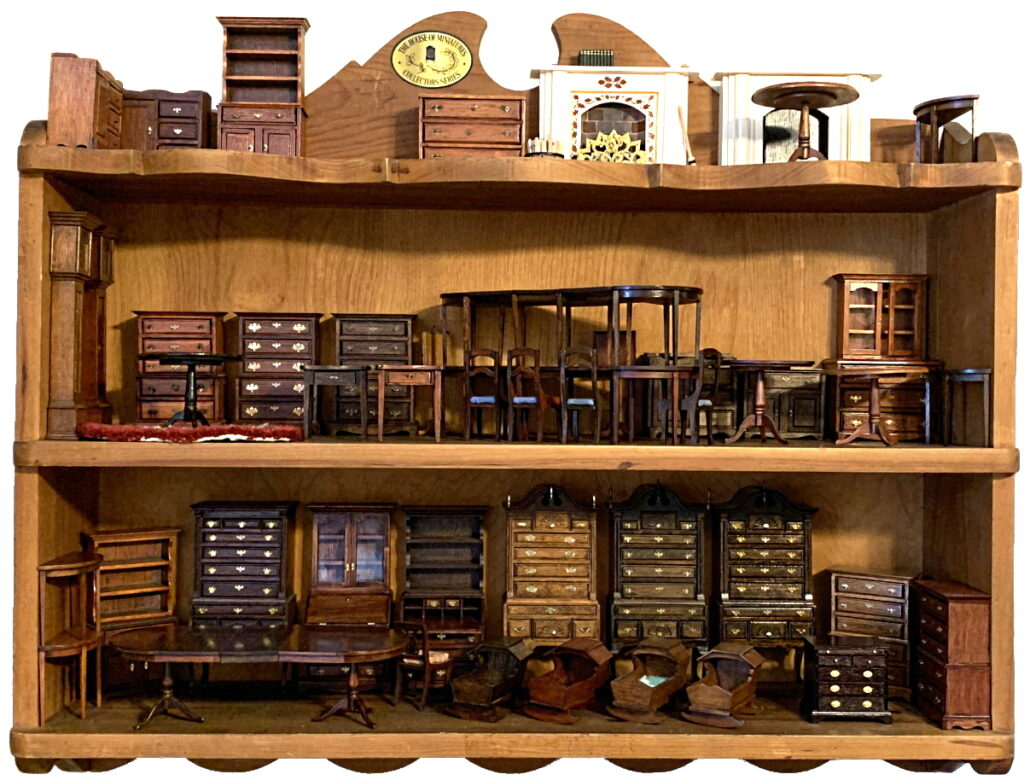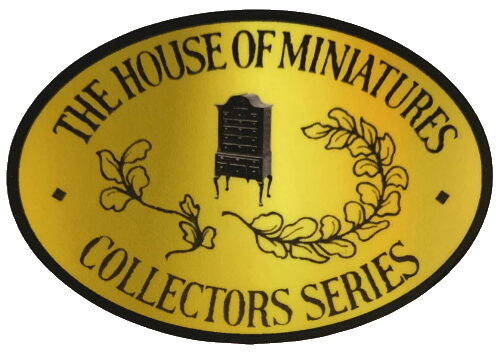You put a lot of time and effort into completing a kit from The House of Miniatures collection. Sanding, gluing, staining, finishing. Maybe you carve the feet, dress the bed, or add working hardware. After you complete your heirloom, does it have more value than before you began? Or if you wish to sell a collection your grandfather built, are they worth anything? Where do you find a market for selling completed kits?

Acquiring Collections
A few years ago, I bought several small collections of The House of Miniatures products. One included a dollhouse and many completed kits, in addition to many kits still unbuilt. Some of the completed kits were damaged, and all needed cleaning and polishing.
After making several repairs and improvements, I looked to see what luck folks online were having selling completed kits. I was shocked to find the finished pieces selling at a discount compared to unbuilt kits.
Clue to the Success of THoM
This turned into an insight. The lure of The House of Miniatures has always been the do-it-yourself or “crafting” nature of the product. Collectors and those wishing to display their lovely houses are happy to spend good money on Bespaq or artisan miniatures, complete with pedigree. THoM fans want to make their own, to build skills and build a legacy. We like to invest ourselves in the process and the product.
Mini Disasters
Admittedly, sometimes the kits are not as lovely as the picture on the box. Faulty assembly, hasty work, and spotty finishes sometimes mar the work. But there are some genuinely artisan-level builds out there. Aren’t they worth something?
Yes, as it turns out, there are collectors who see the value of craftsmanship and know the quality of The House of Miniatures. They just don’t want to be duped. So, what is the secret to selling completed kits? Details, finishes, and images.
Spot or Create Quality
The Keys to Selling Completed Kits
Here are some things to feature if you have great quality finished kits:
- Has the builder added details?
THoM kits are good quality and machined beautifully, but they are a blank canvas when it comes to finer detail. Chair legs, hardware, drawers and doors can all stand improvement. If you find a highboy with carved legs, or a dresser with working hardware, or painted piece with a mural, you have the work of an artisan that a collector will prize. - Is the fit and finish superb?
If the finish is smooth, glossy, and even — with no glue marks at the corners — you may have something special. Few people took the pains to spray their finish, or even follow the instructions for waiting and sanding between coat to get a great finish. Even fewer put in the pains to ensure that the drawers and doors and lids move smoothly on the finished piece. Collectors reward a professional finish. - Can you show the beauty?
The last part of the puzzle is up to you. Can you take excellent photos and write great, descriptive ad copy? Selling completed kits really comes down to knowing what you have and being able to show it off. Lighting, clarity, setting, and perspective will make or break your presentation. And how well you describe the piece is critical to the price. Adding a bio of the artisan and the story behind the item also adds interest.
Tell a Story
When it comes to selling completed THoM kits, the most valuable part of the equation is the backstory. Even if you are the artisan, telling why you love making mini furniture can help a collector connect with you.
Do you have a story? Do your minis have a history you can tell? Tell it well and show it off with skill. Who doesn’t like a great Show & Tell?

I both build and refurbish (and have been known to purchase) completed kits. I sometimes have artisan minis available to purchase on The House of Miniatures website.

